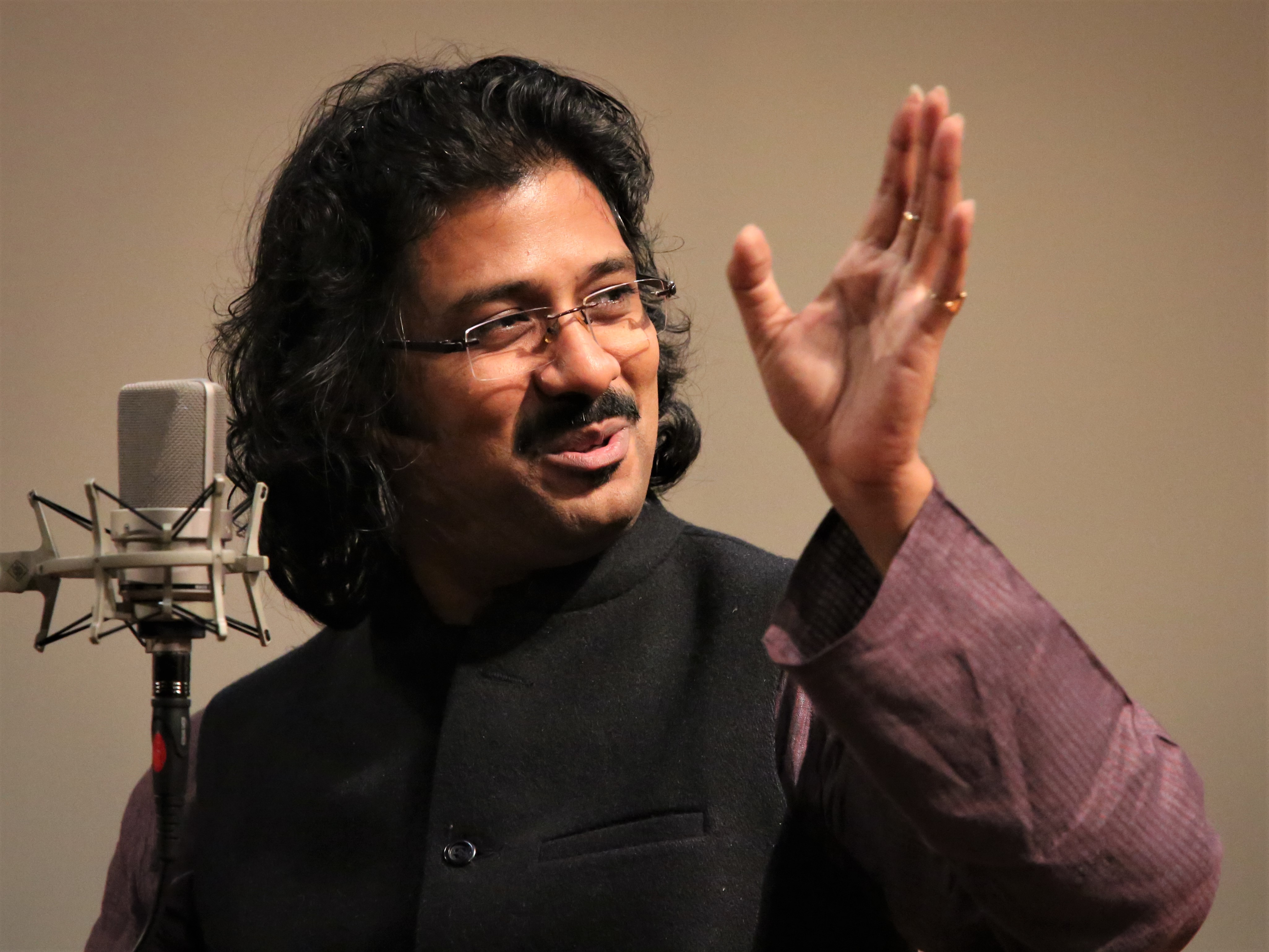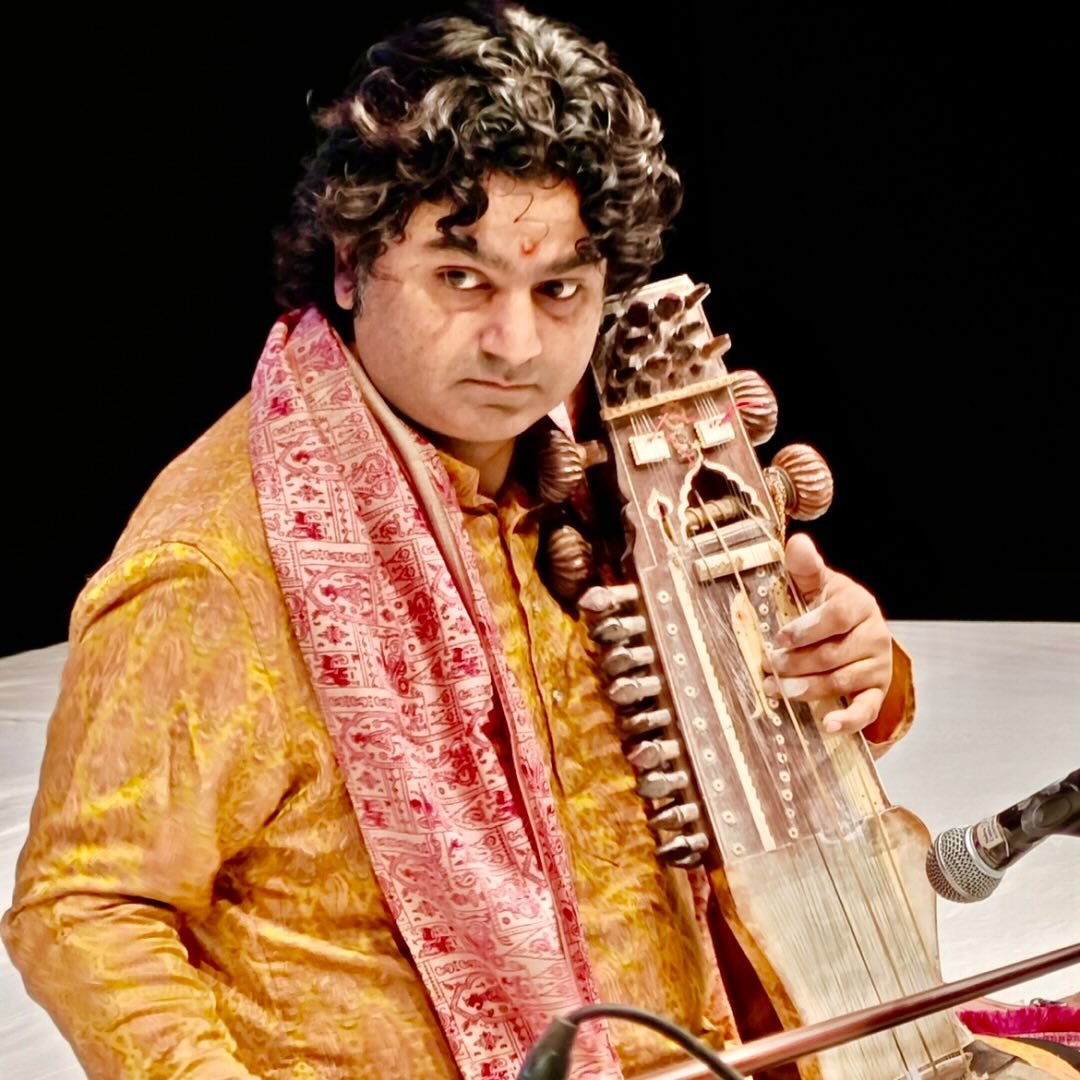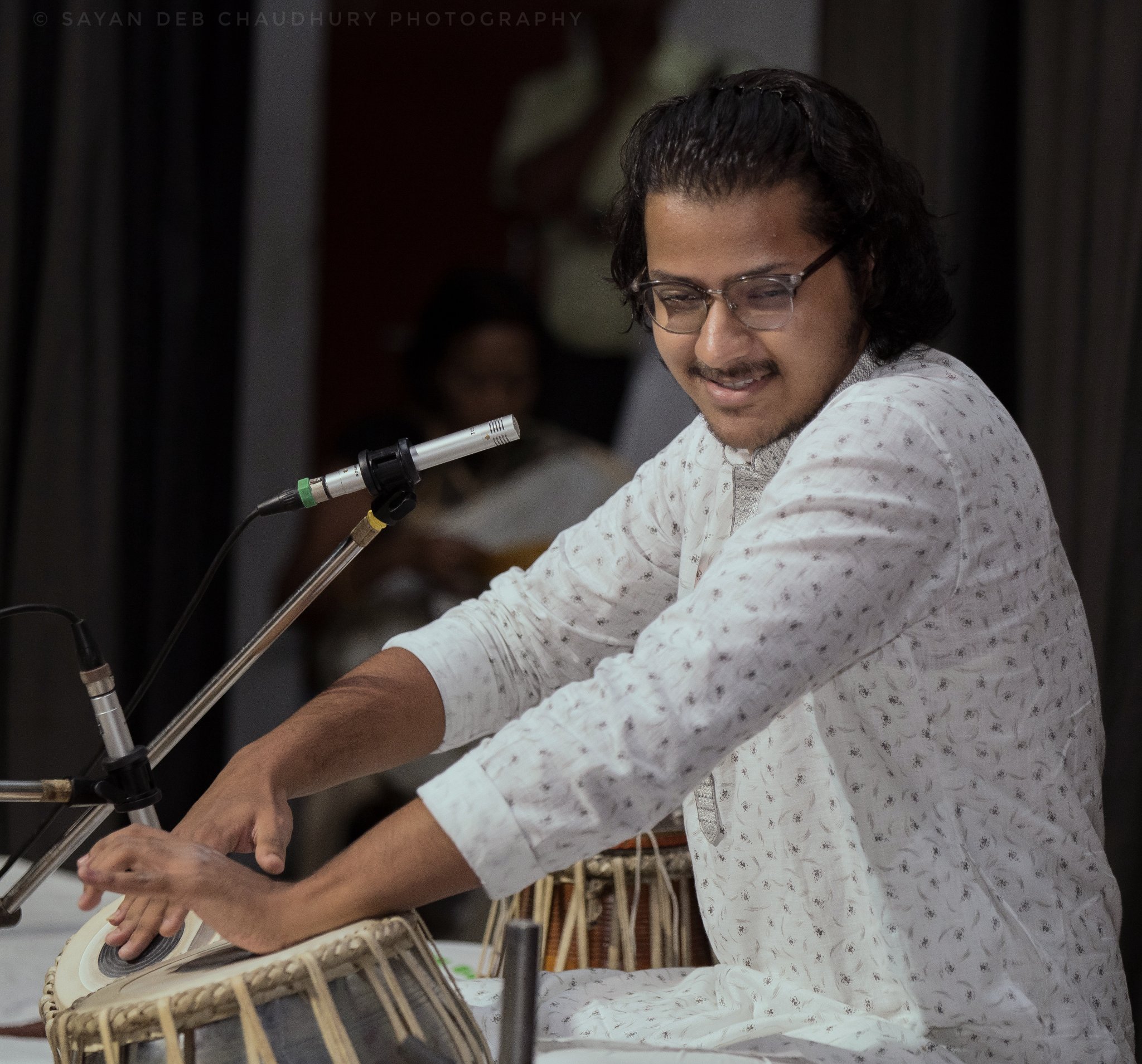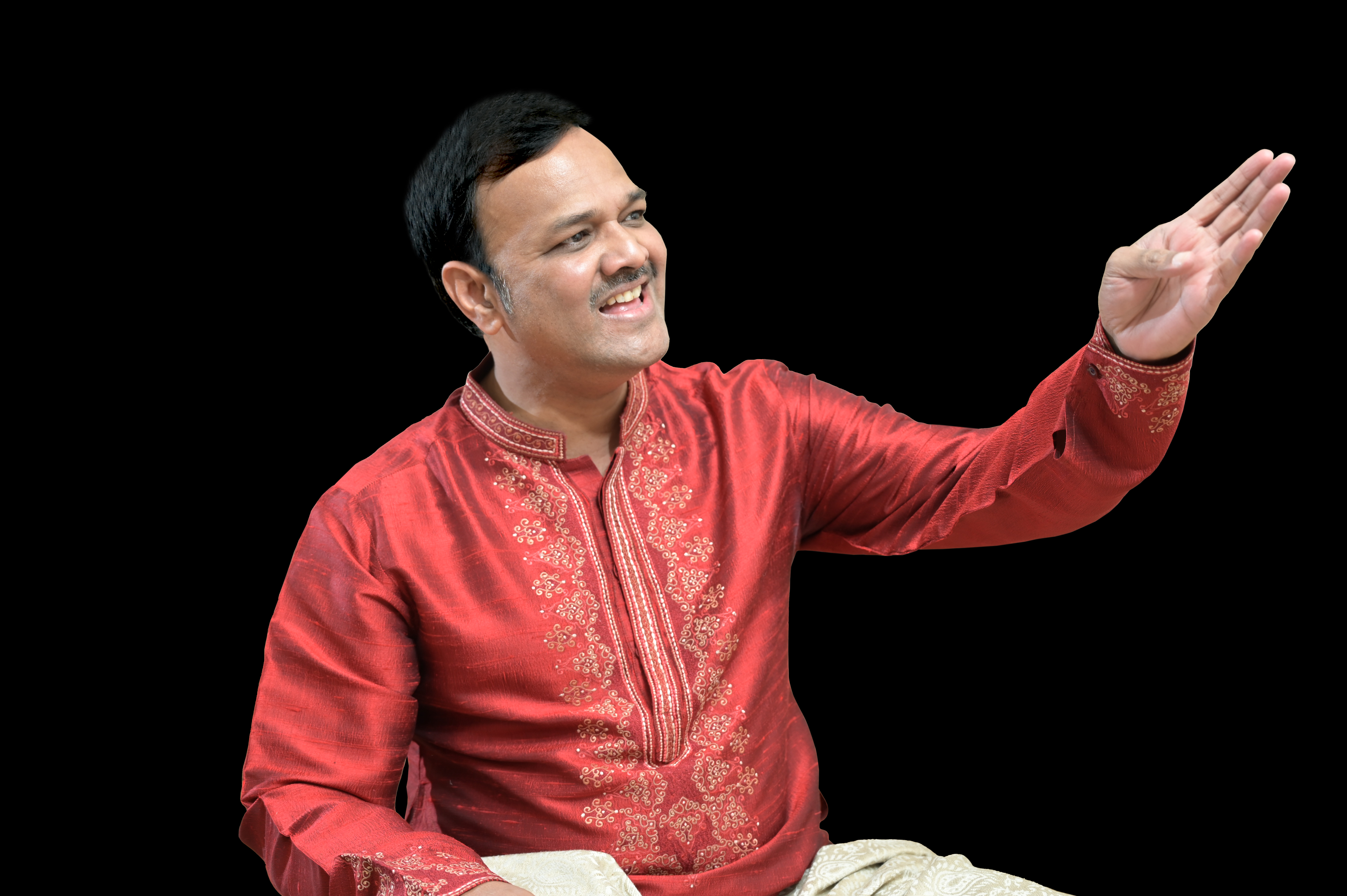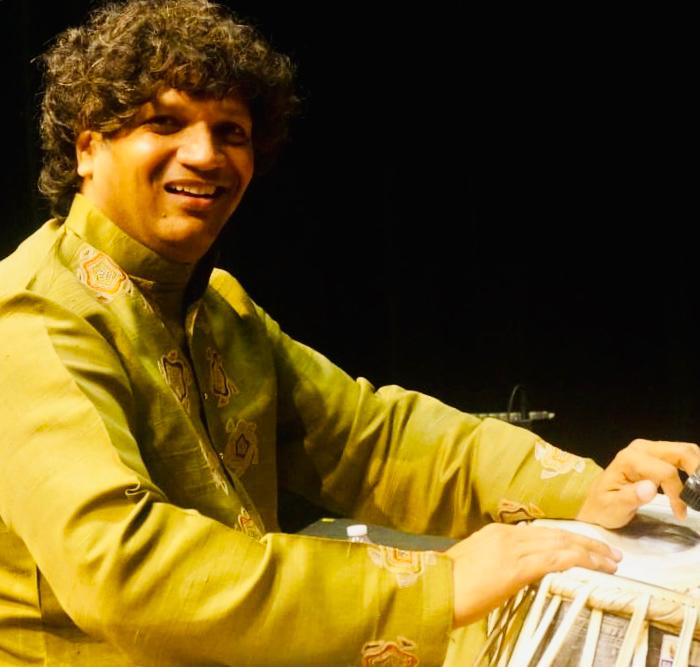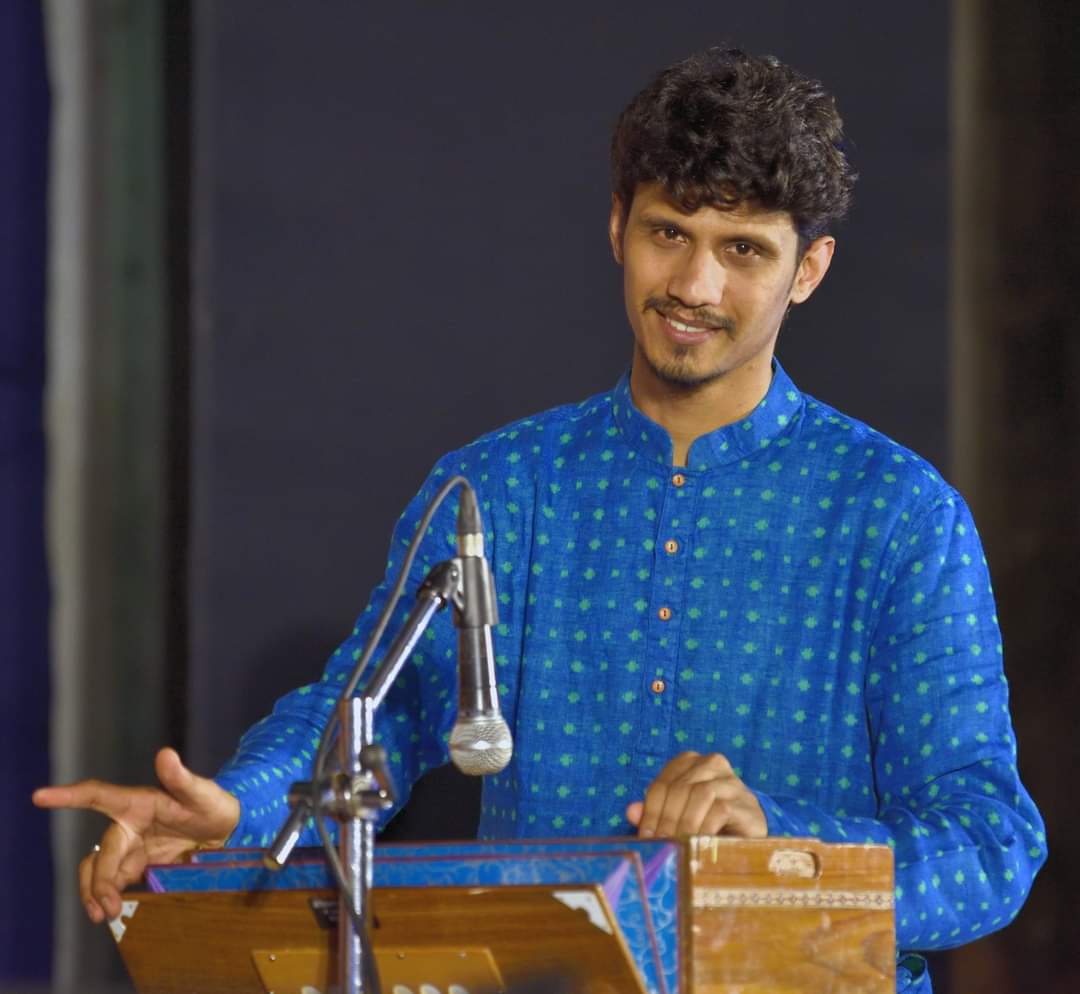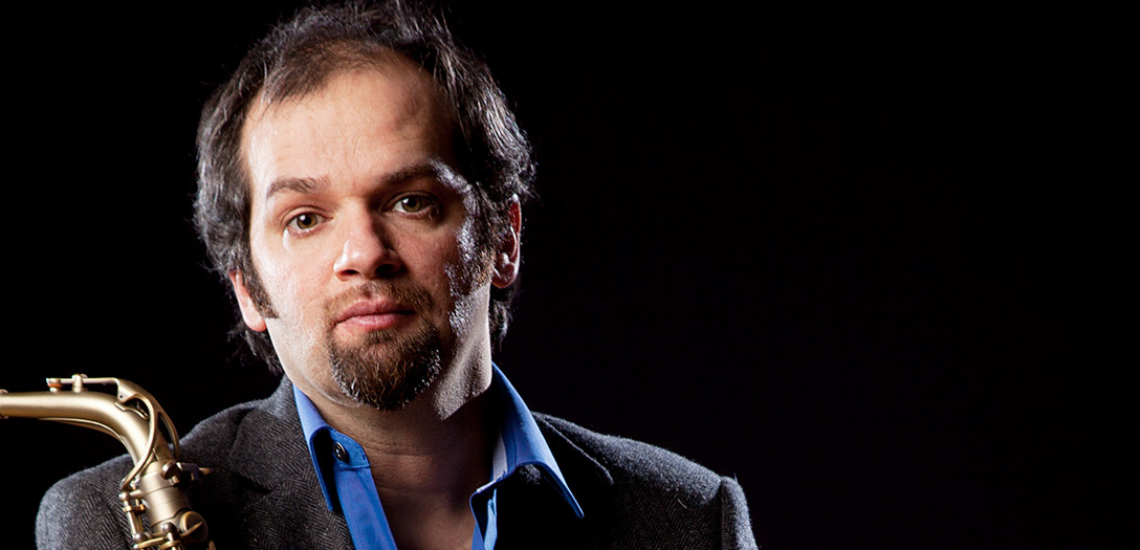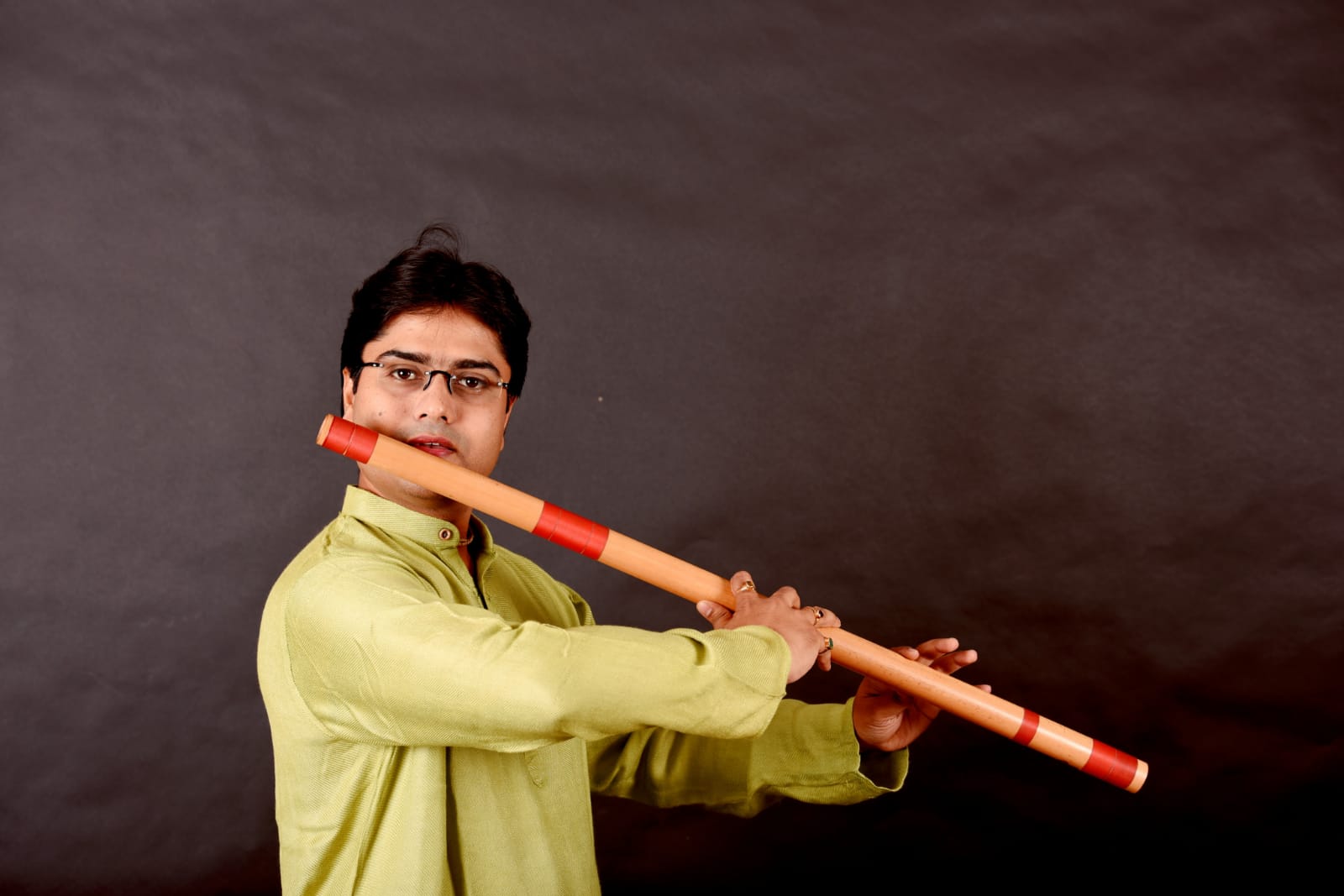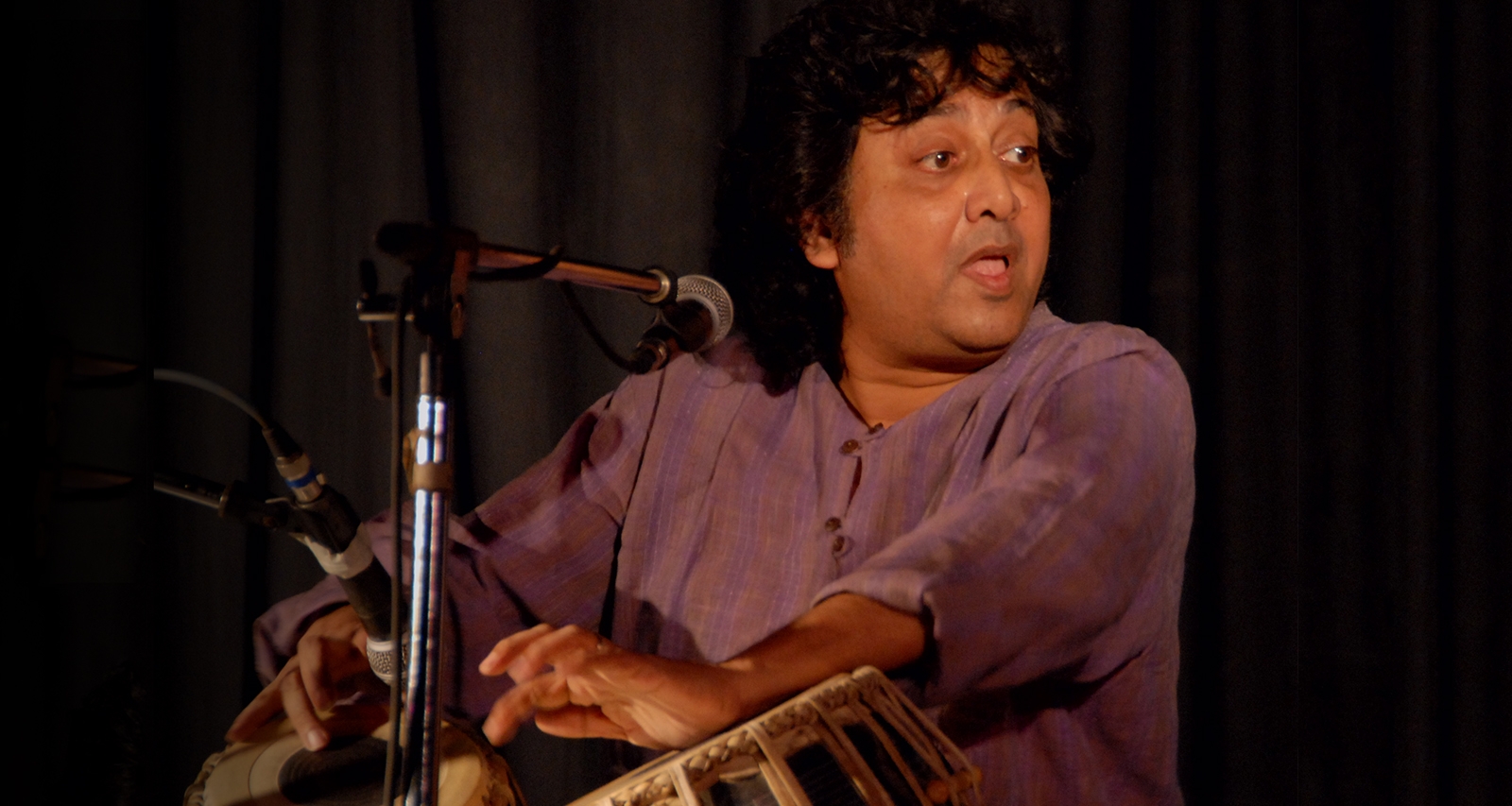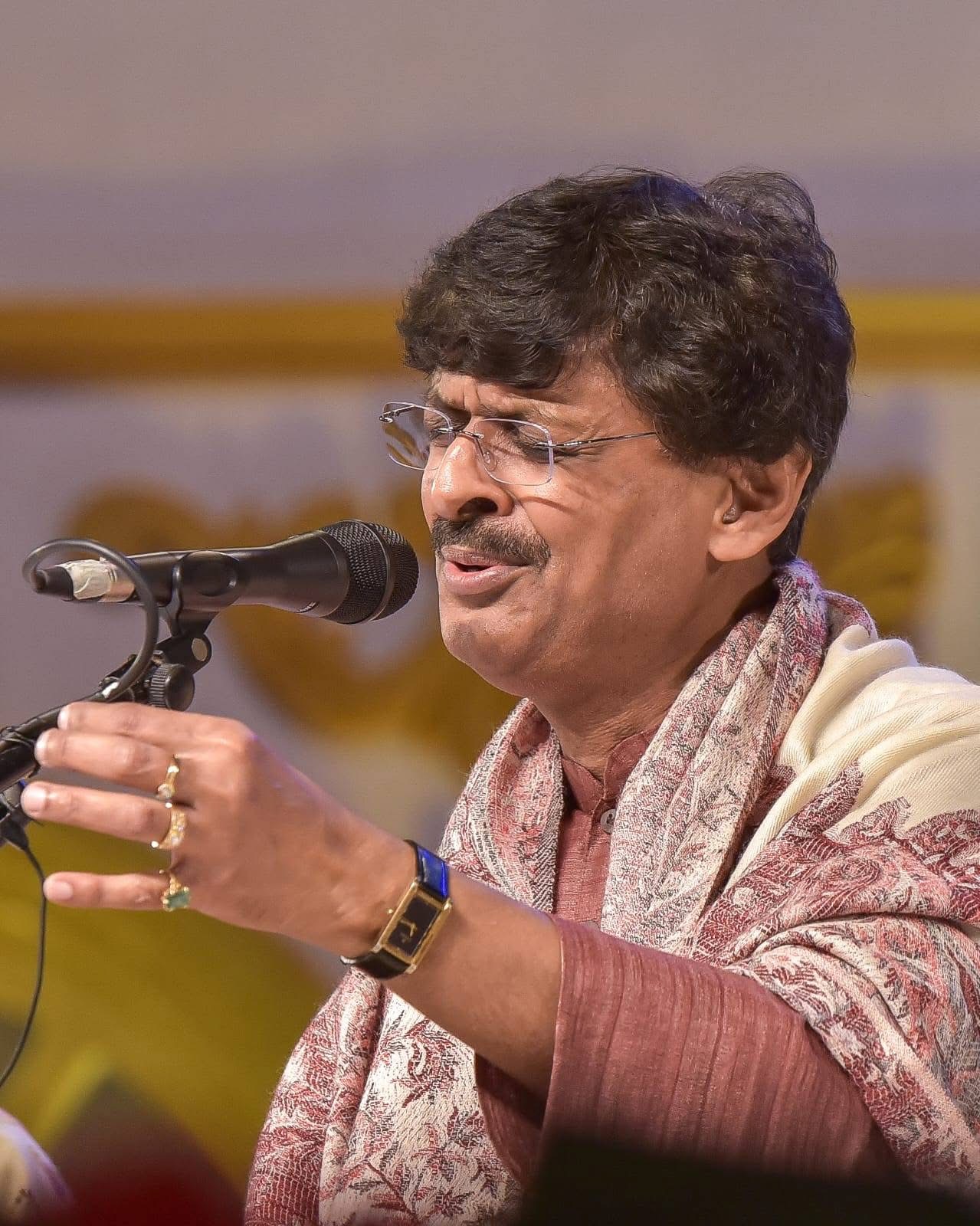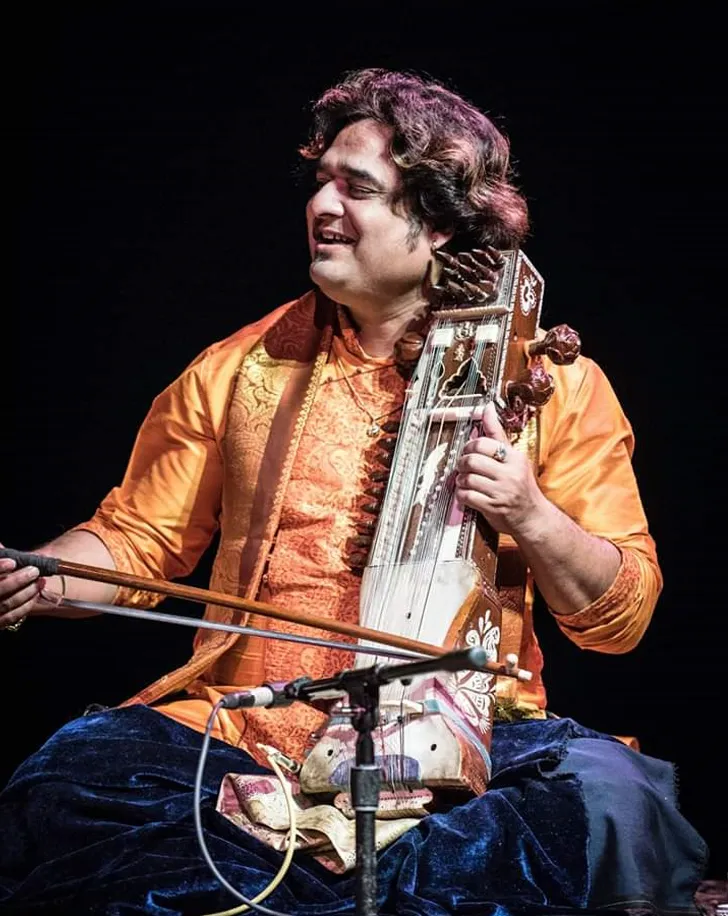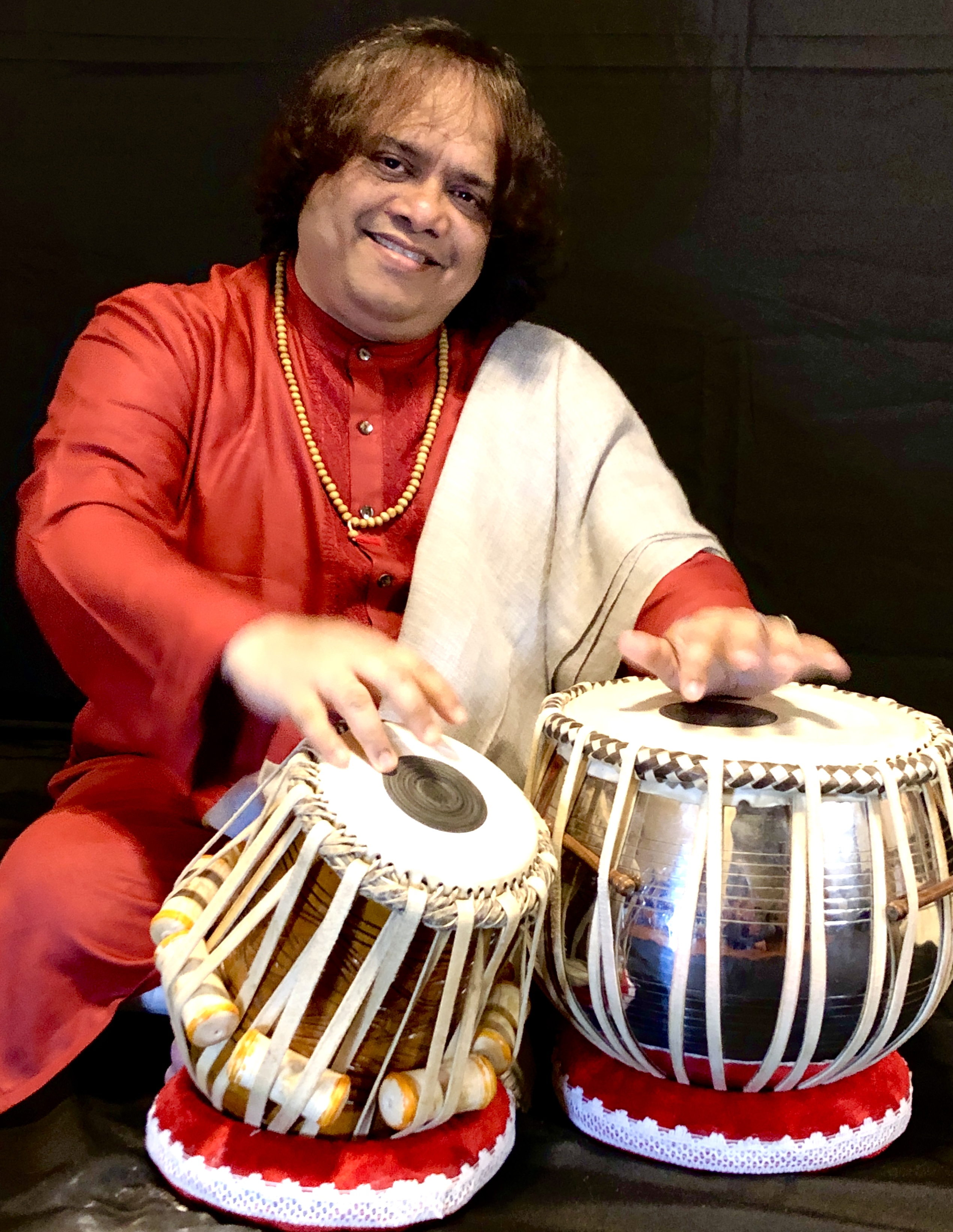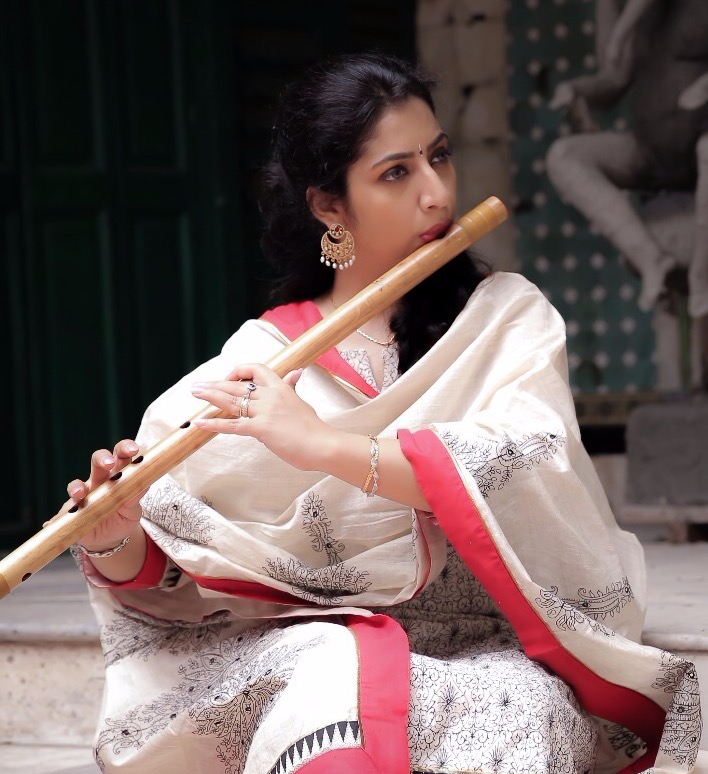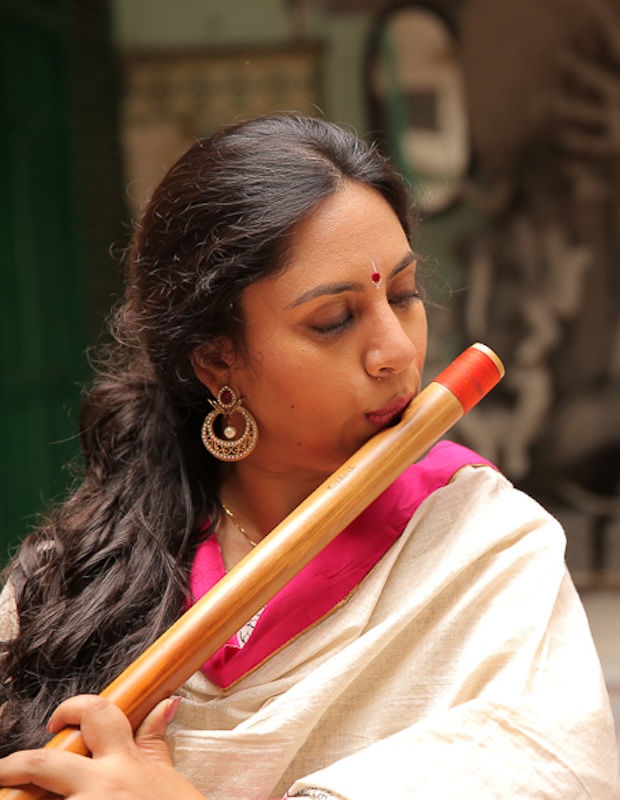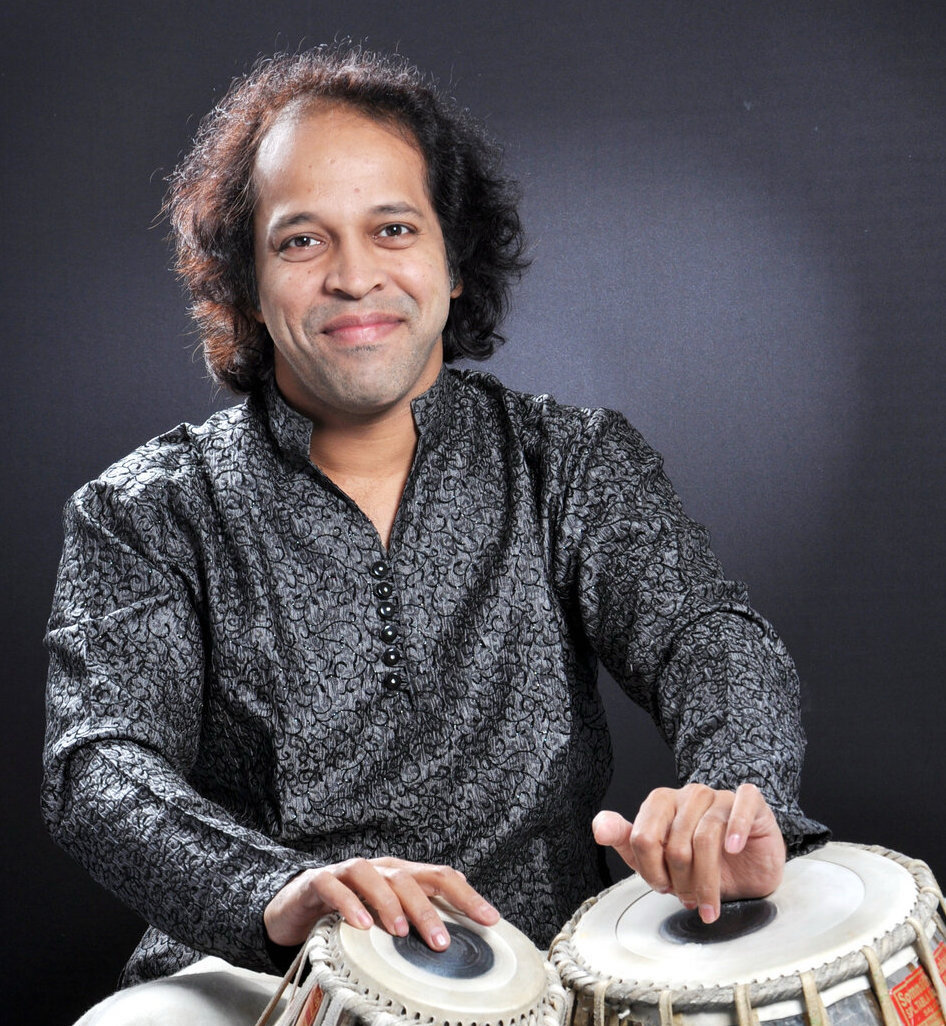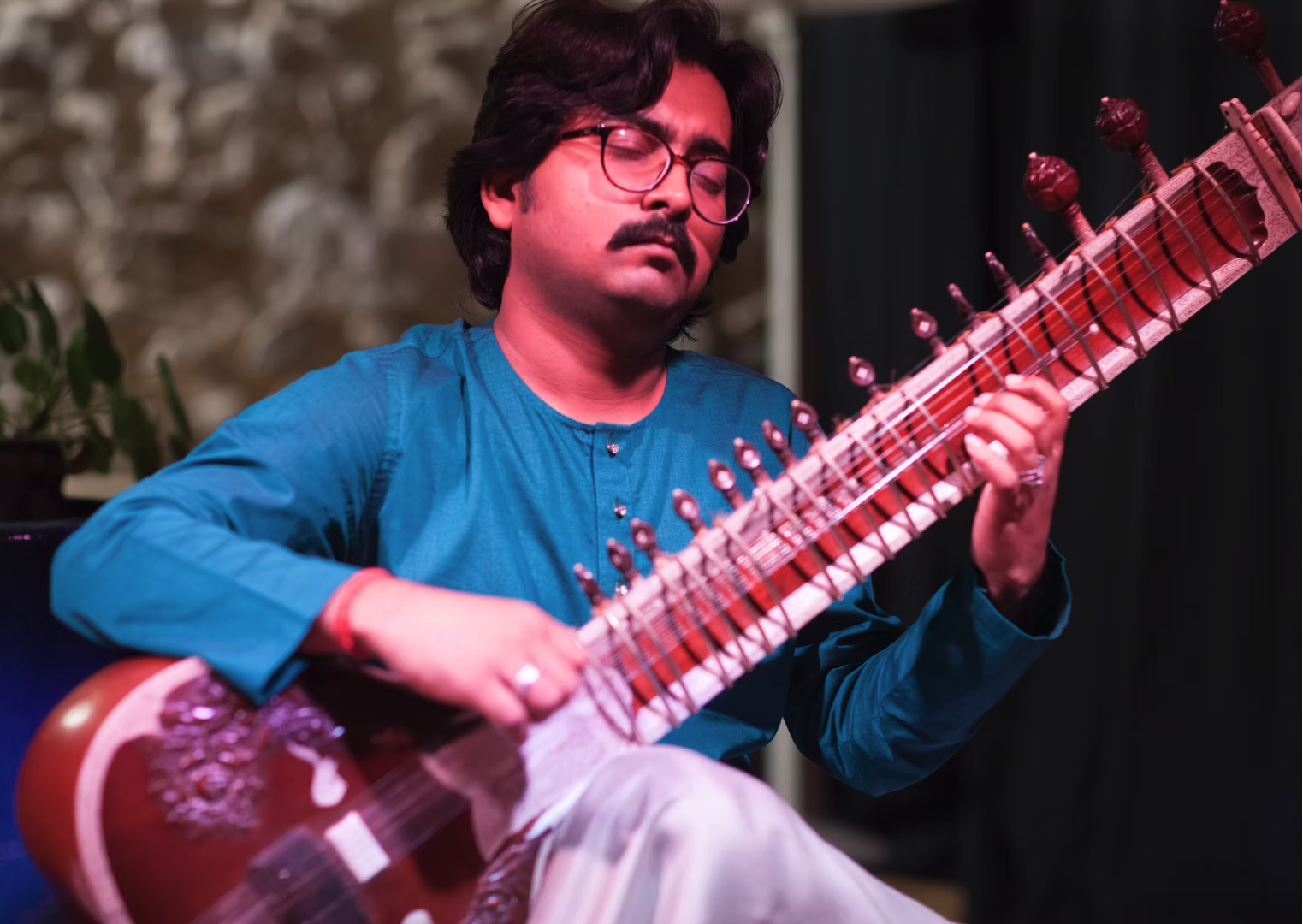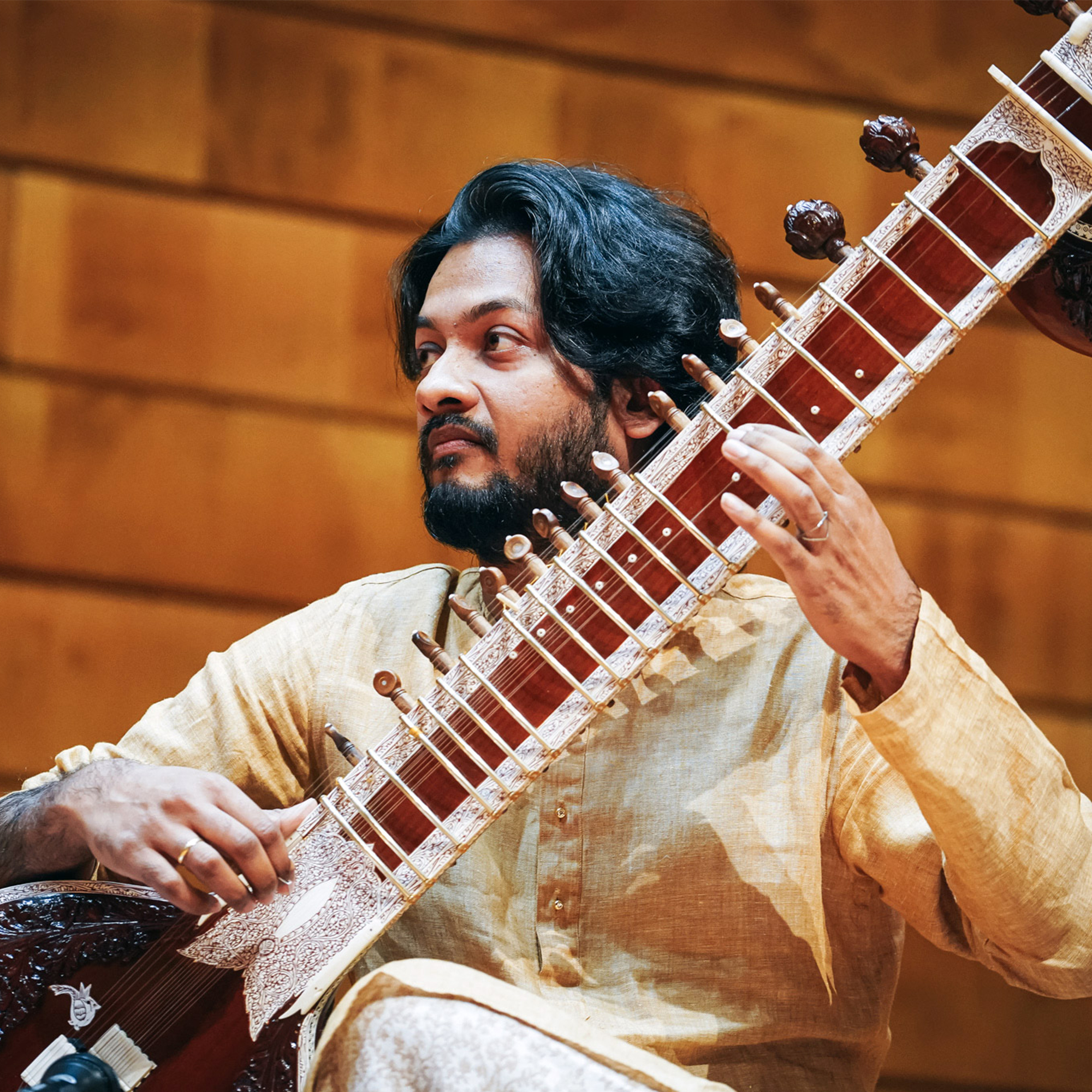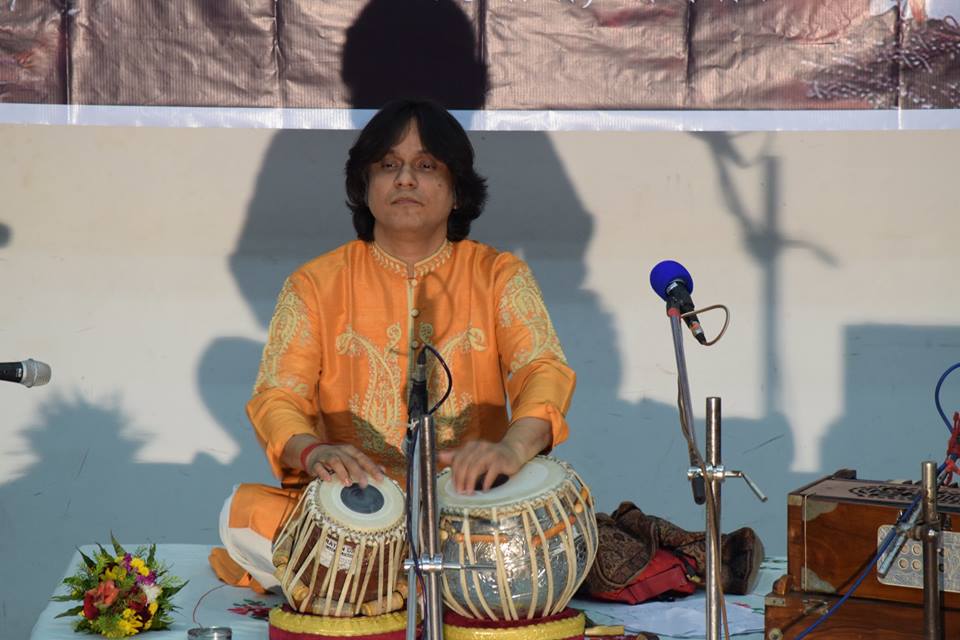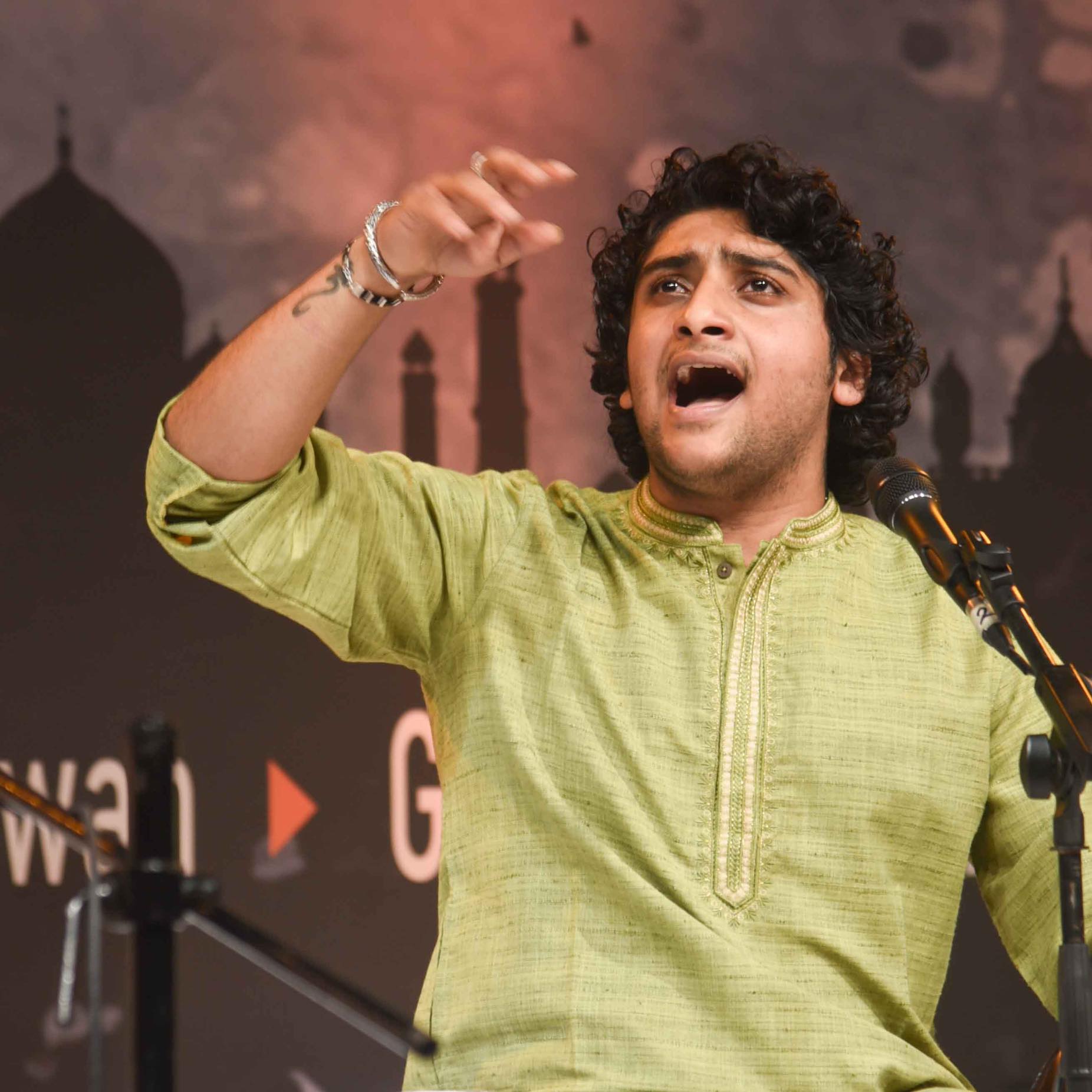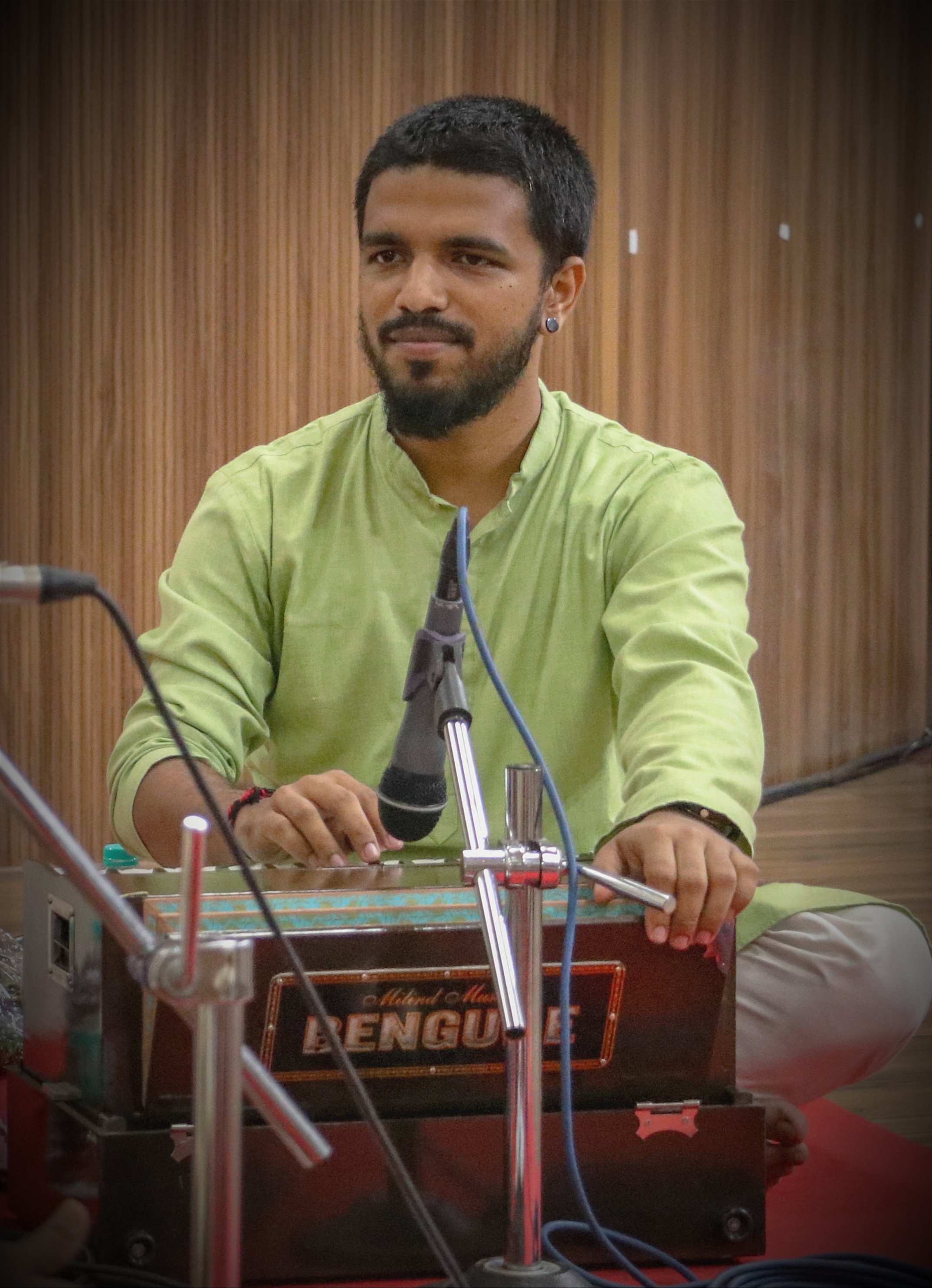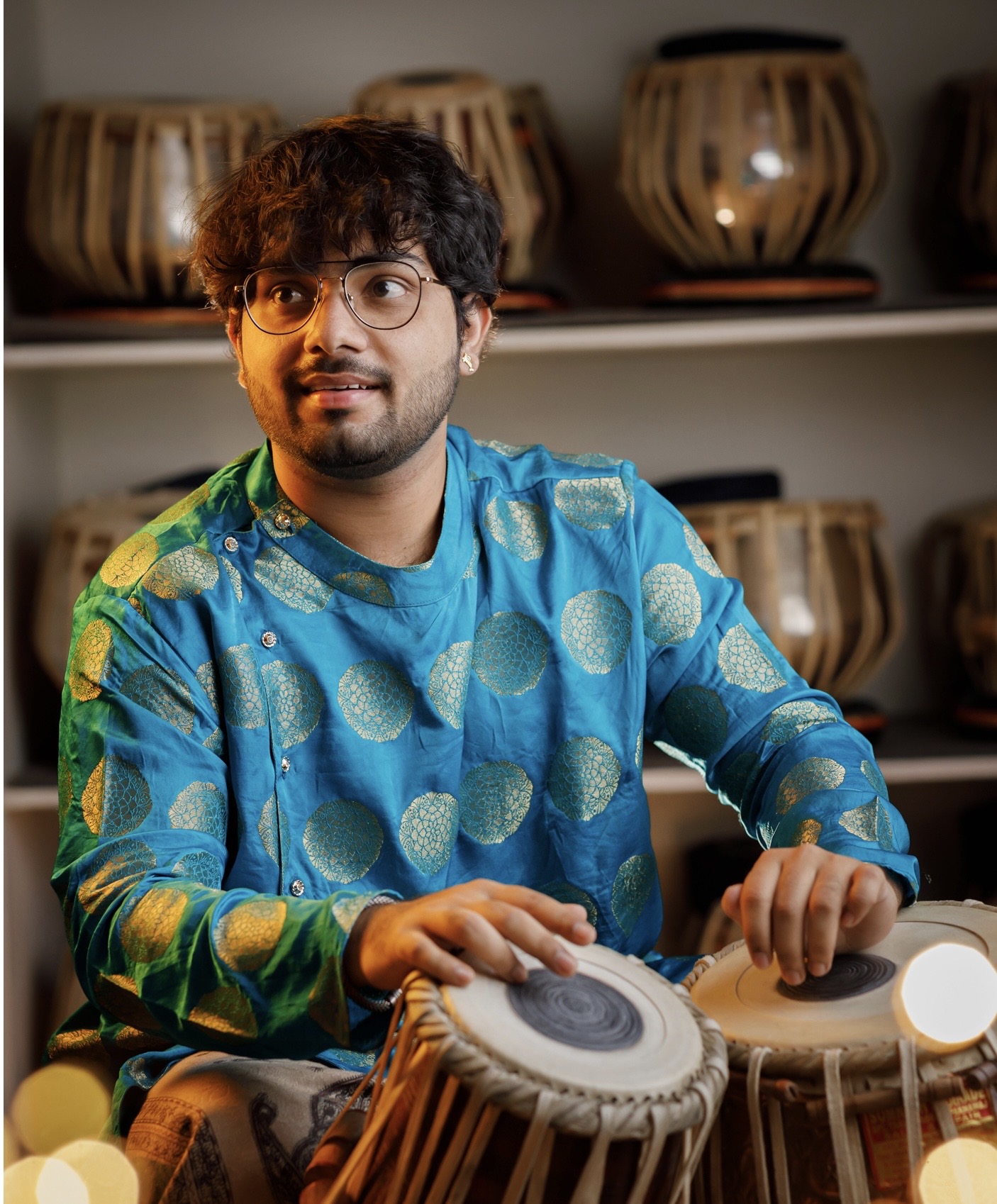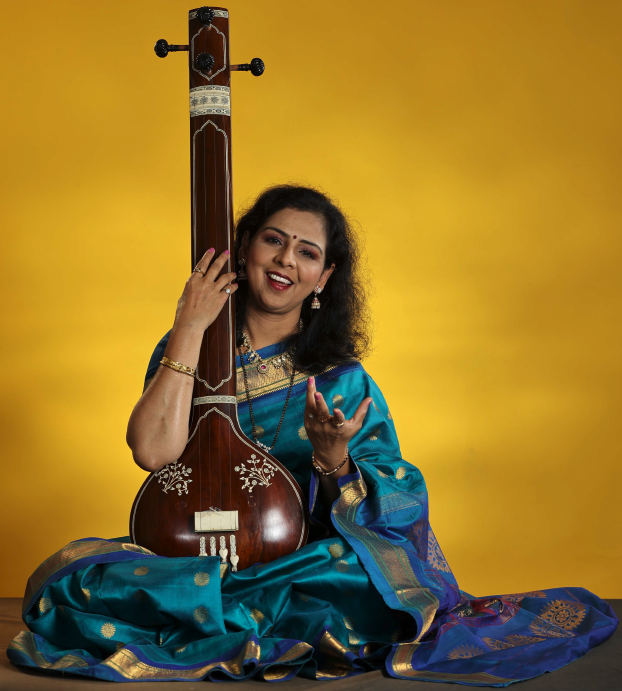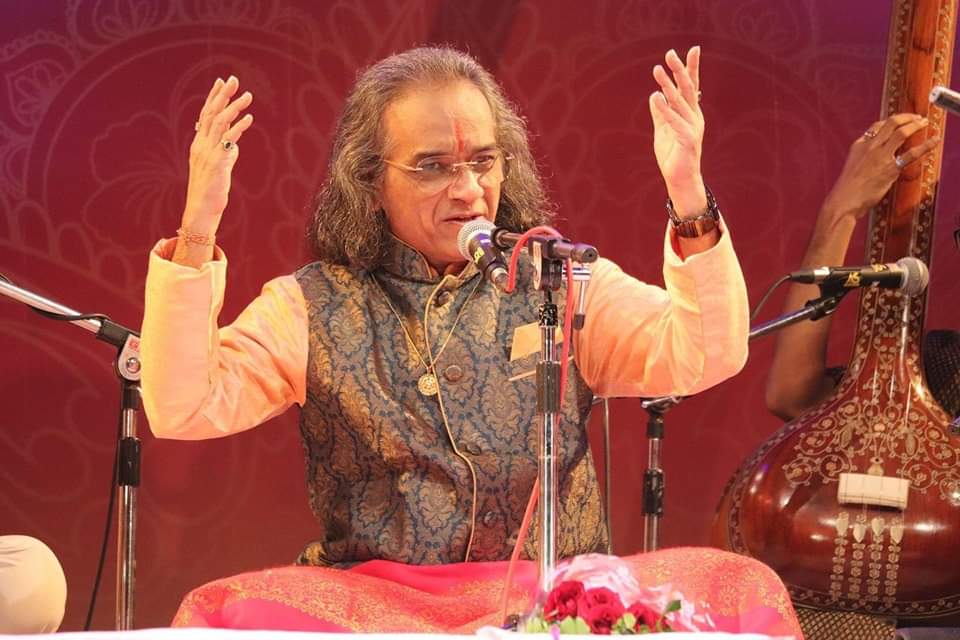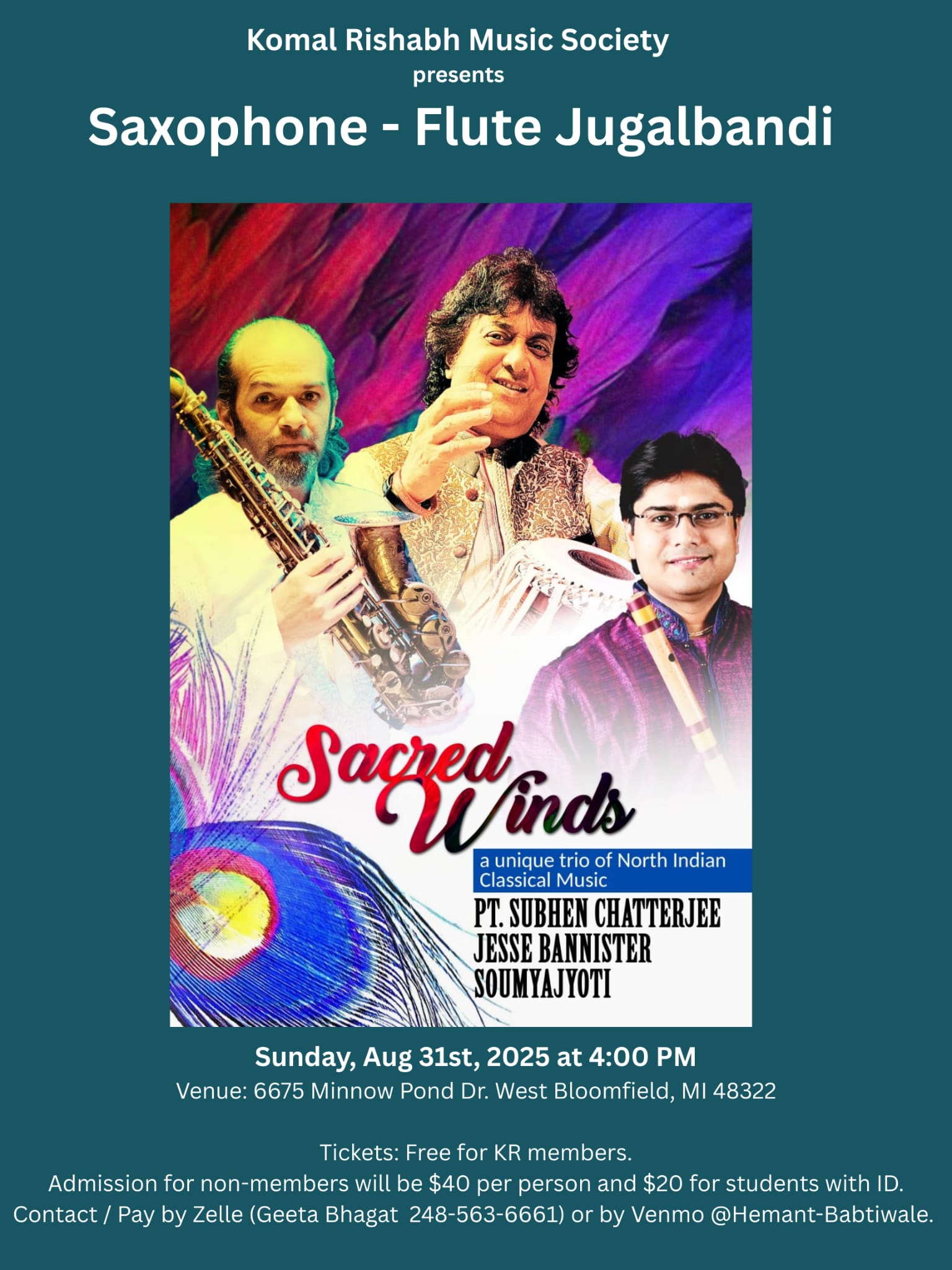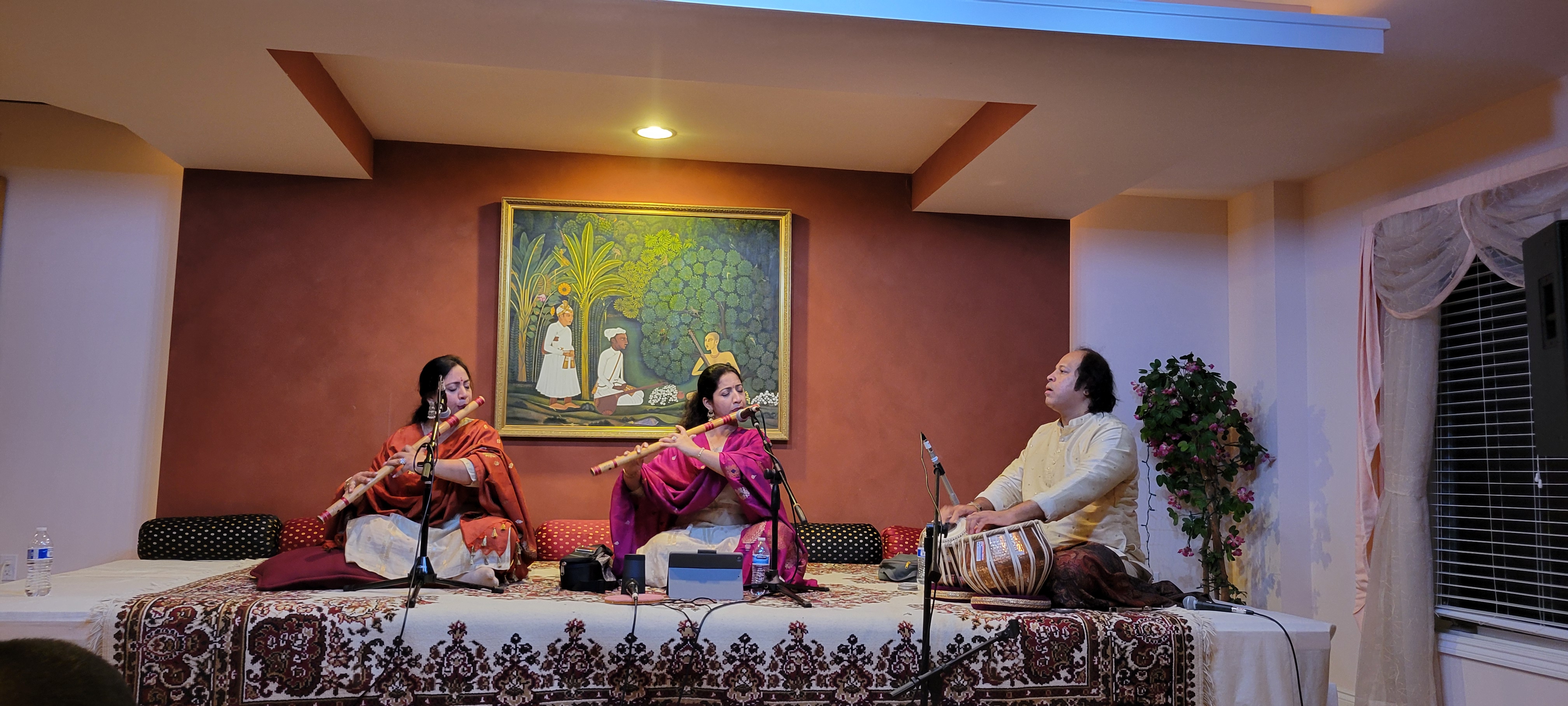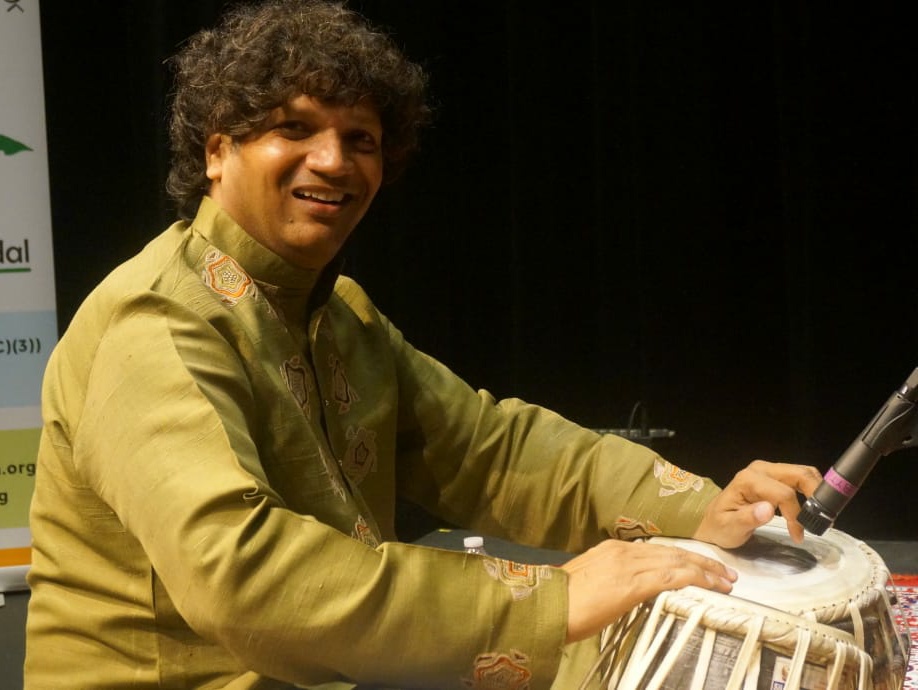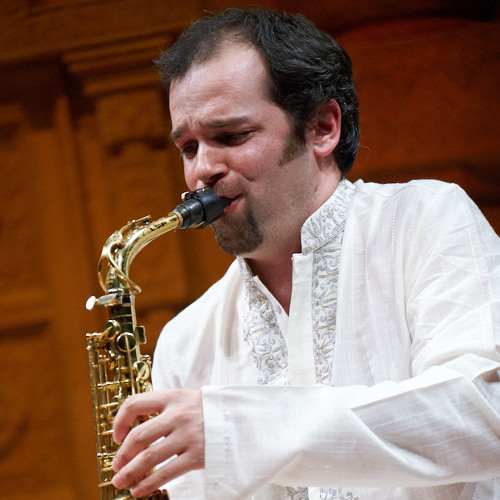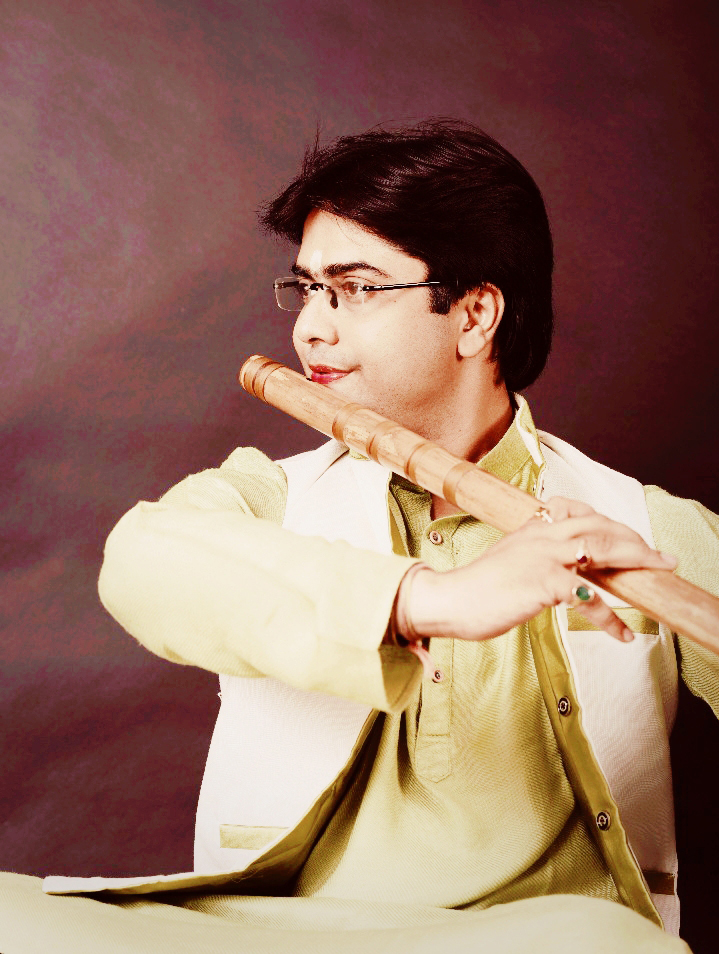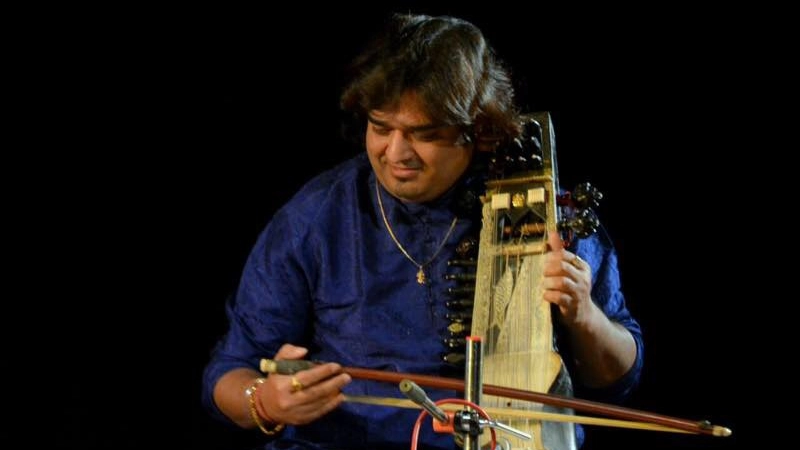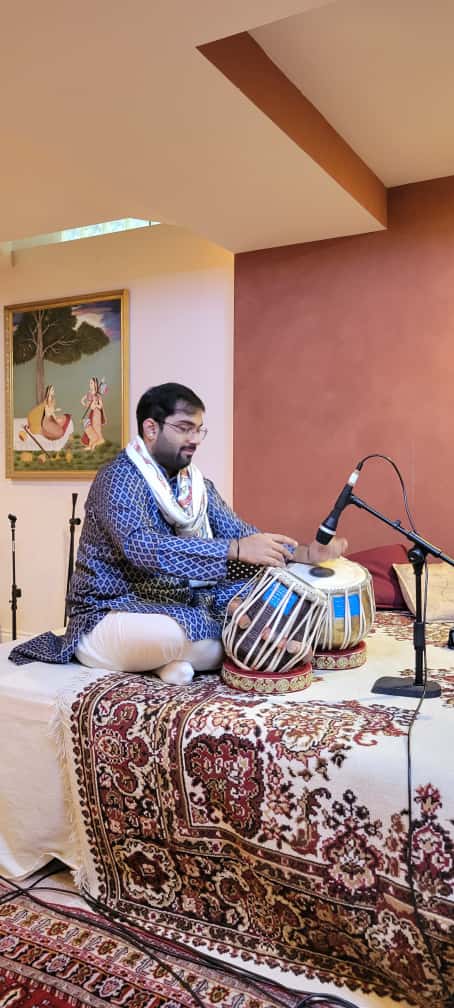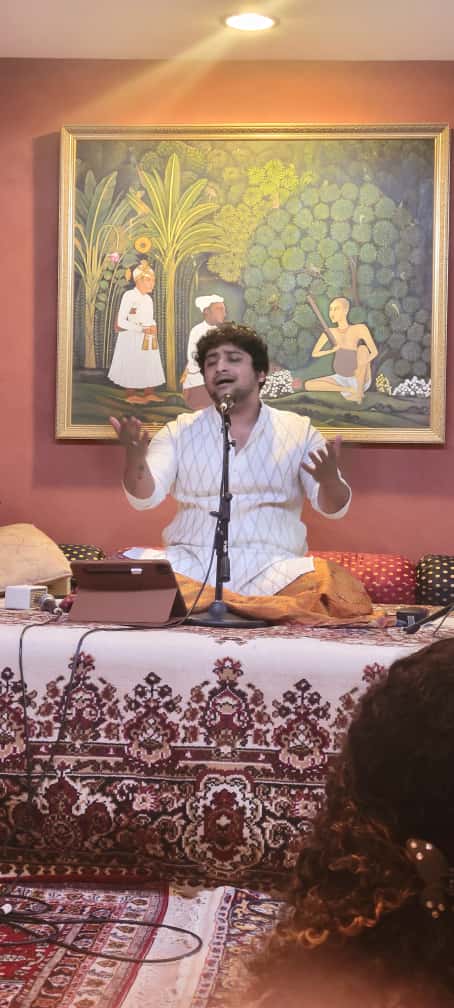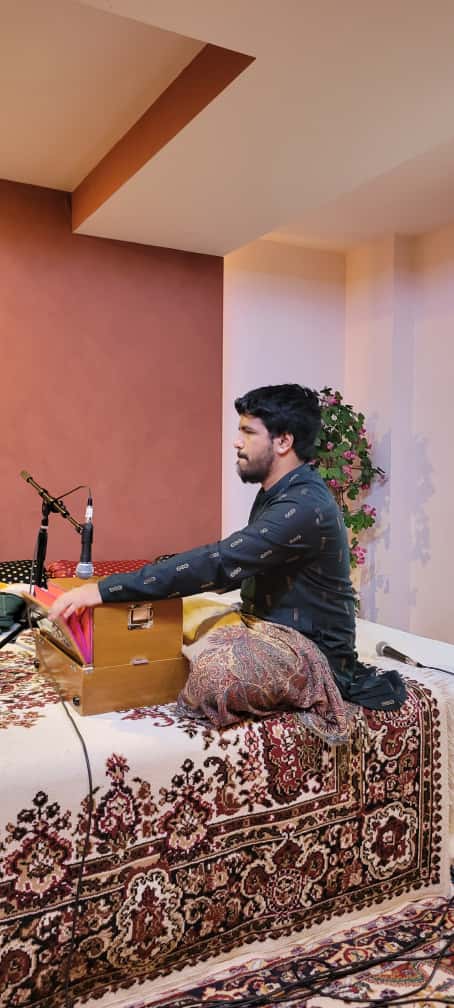The Komal Rishabh Music Group concluded its 2025 concert season with a soulful morning of music featuring vocalist Shri Siddhartha Belmannu, accompanied by Shri Prasad Kamath on the harmonium and Shri Roopak Kallurkar on tabla. From the very first note, which very aptly was Komal Rishabh (flat Re), Siddharthaji drew the audience into a musical journey of subtlety, emotion, and artistic depth.
The recital opened with Raag Ahir Bhairav, beginning with the vilambit composition “Rasiya Mhara” in Ektaal(12 beat cycle). Siddharthaji’s expansive alaap and delicate meends created a meditative atmosphere. Siddharthaji possesses a rich, powerful voice that permeates the entire auditorium or in this case, the Komal Rishabh baitak space —not through volume alone, but through depth, resonance, and emotional clarity. From the moment he began, the audience was drawn into an immersive musical experience. Ahir Bhairav uses shuddha dhaivat and komal nishad while maintaining the majestic Bhairav protocol with komal rishabh. Siddharthaji captured it beautifully every single time he sang the “g m r” phrase. He continued to show his technical prowess with creative sargams, gamak (oscillatory) taans and laykari that had the audience break into frequent applause. He followed with Pt. Kumar Gandharvaji’s “Kaise Manaoon” in Teentaal, marked by crisp taans and spirited exchanges with the tabla.
The transition to Raag Desi brought two compositions by Pt. Vinayak Torviji—first in Tilwada(16 beat cycle), “gaao re bajao” and then Teentaal, “mana kahoon kee baat keh nahin paoon”. Siddharthaji’s improvisations highlighted the raga’s gentle romanticism, while Prasadji’s harmonium mirrored his phrases with sensitivity and finesse. The use of both the Dhaivats in this rendition of Desi added to the beauty of this raag which has an abstract, non linear architecture.The mastery of such ragas demands significant taleem (training) and reflective engagement. The finesse with which Siddharthaji handled the raag is a testament to the rigorous training that he has undergone under his guru. Equally impressive was the sangat by Prasadji and Roopakji. Providing the perfect theka and just the right support on the harmonium makes for a harmonious concert.
Post a brief interval, we were treated to a serene exposition of the afternoon raag Gaud Sarang. First came a vilambit bandish in Jhoomra(14 beat cycle), “paati jhara gaiyaan” followed by a teentaal composition, “piyu palana laage moree akhiyan’. Gaud Sarang once again, is a vakra (non linear) construct. It does not lend itself to simplistic linear aaroh-avaroh formations. Just like Desi, this raag demands manthan (deep contemplation). Once again Siddharthaji presented the raga with aplomb. The sangat by Prasadji and Roopakji elevated it to another level. The afternoon reached an emotional peak with Raag Patdeep. In the vilambit teentaal bandish “Piya Nahin Aaye,” Siddharthaji’s rendering was drenched in longing, with polished voice control and heartfelt expression. His voice takes him like a soaring eagle across three octaves, leaving the audience sit up in disbelief. It is indeed a thrilling experience to hear an artist explore several octaves with such ease and clarity. The subsequent dhrut(fast pace) section showcased the trio’s collective agility and rhythmic flair. In the dhrut composition, the laykaari in the line in the mukhada (first part of the bandish) “haan haan karata hoon” brought out such playful laykaari and spectacular interplay between the artists that the audience wanted to also say, “haan haan” and did so with a thunderous applause.
After a rich classical journey, Siddharthaji surprised the audience with a vibrant set of semi-classical and devotional pieces. The Marathi abhang “Maze Mahera Pandhari” brought visible joy to the listeners, followed by Purandara Dasa’s beloved “Jagadhodaarana.” In this composition in Kannada, saint Purandara Dasa says that while the world venerates Lord Krishna as a divine incarnation, to his mother Yashodha, he was just a child and she played with him as a mother would play with her son. This bhava (emotion) was captured so beautifully by Siddharthaji. It left many in the audience teary eyed. The tabla theka and laggis by Roopakji was brilliant, making the experience even more divine. The evening concluded in Raag Bhairavi with the soulful bhajan “Kelata Hai Giridhari Murari.” As the final notes faded, a moment of reverent silence filled the baitak space before the audience erupted into a standing ovation.
Throughout the performance, the musical chemistry on stage was unmistakable. Siddhartha Belmannuji’s interpretive depth, Prasad Kamathji’s lyrical harmonium, and Roopak Kallurkarji’s rhythmic sensitivity created a seamless, immersive experience. One departing listener summed up the collective sentiment: “This wasn’t just a concert—it was a gift.”
With its perfect balance of classical rigor, emotional storytelling, and devotional warmth, this concert was a glowing finale to Komal Rishabh Music Group’s 2025 season. The audience left with full hearts and lingering melodies. Looking forward to the 2026 KR season. In the meantime, bundle up, sit by the fireplace and enjoy the winter wonderland that we call home.
- Geetha Raghu

